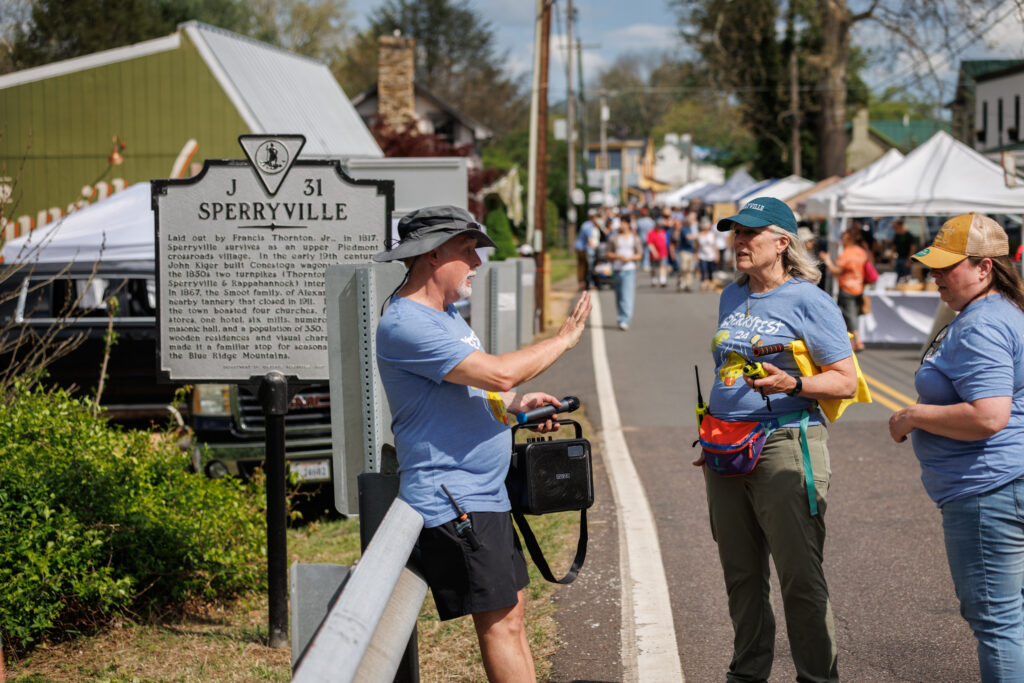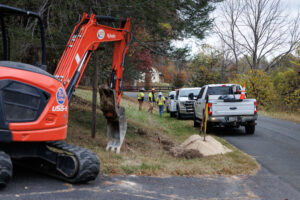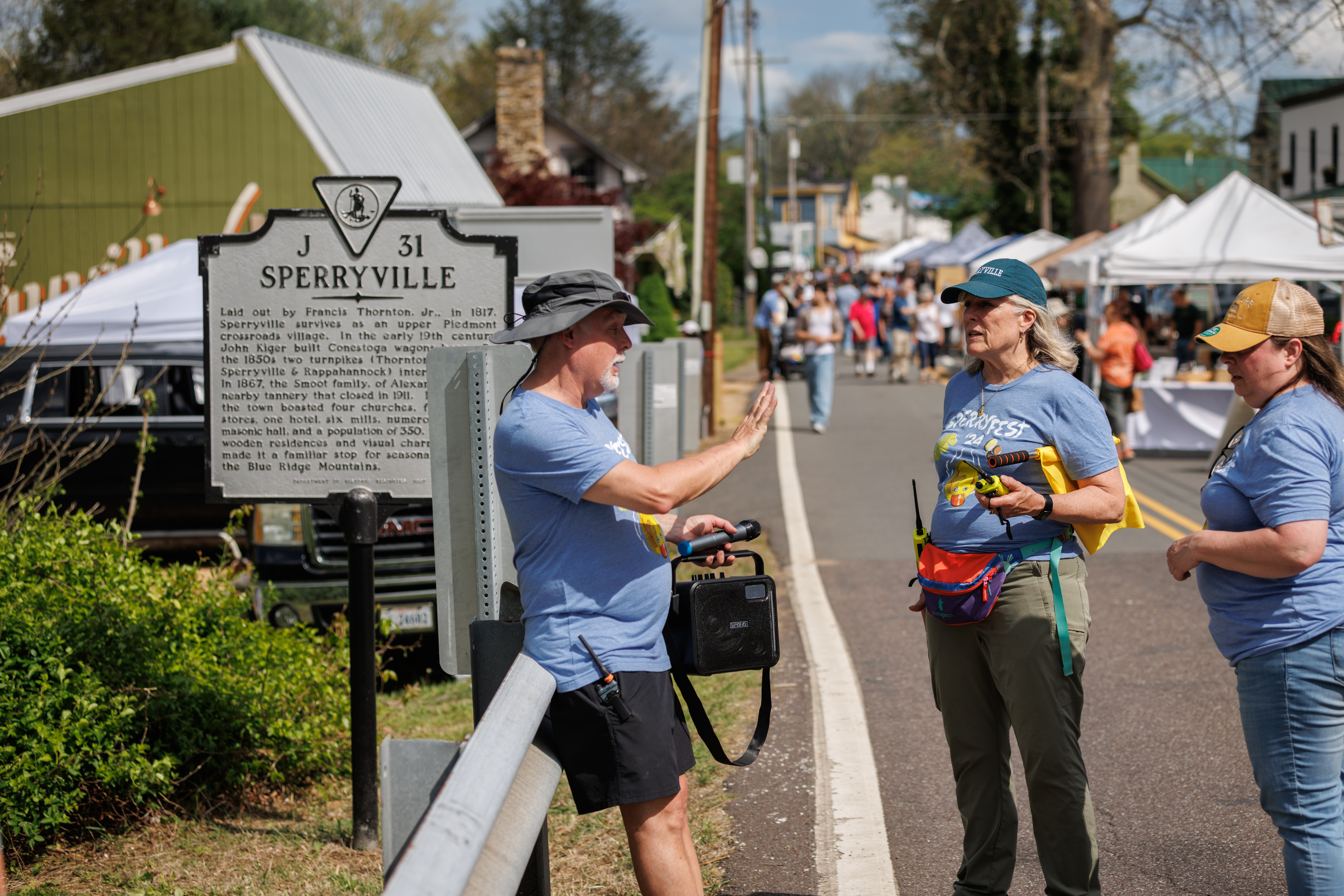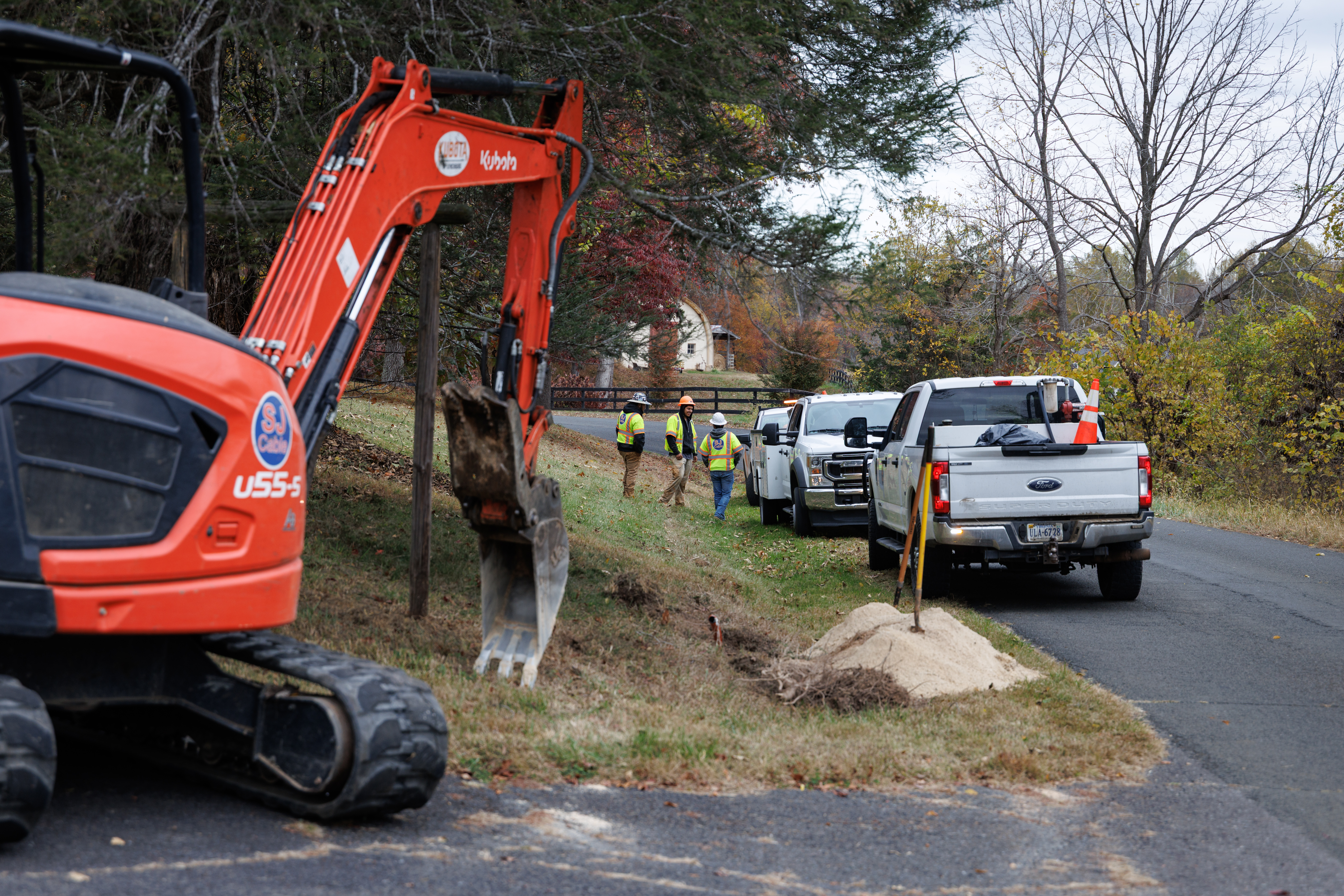Residents choosing other internet options
All Points Broadband (APB) is finally laying fiber in Rappahannock County — but after years of delays, it may be too little, too late.
The company says the first residents are expected to get service by late December or early January. But what was supposed to be a transformative public-private partnership to bring high-speed internet to the county instead has become a cautionary tale of missed timelines and changed circumstances.
And now that other companies are filling the gap — without government subsidies — the question is: Is fiber still commercially viable in light of the availability of other services and, more importantly, will residents who signed up for those other services be inclined to switch to APB, if and when it becomes available?
For residents like Paige Flink, the answer was not straightforward. Flink — who in 2022 moved to Old Hollow with a spreadsheet full of dreams and a tolerance for rural life’s trade-offs — was told fiber was at most two years out when she bought her house.
“Initially, I figured we’d just have a landline, because that’s what the previous owners had,” said Flink. “But when I contacted Verizon they said they didn’t do any more landlines, that we had to have a voice-over IP, which meant we had to have internet connectivity to have a telephone line.” Unphased, she figured out a temporary, if expensive, solution.
“I got ViaSat and bought as big a package as I thought I needed. But the first Christmas here, we had to turn all our telephones off to watch a movie,” she said. “We ate through so much data I knew that that wasn’t going to last. And that’s what made me start searching for Starlink.”
Flink ended up creating a custom-built communications infrastructure on the family’s 34-acre property. She bought a Starlink satellite dish from a neighbor. But for it to function during outages, she had to purchase a generator, and a weather station to be able to receive weather warnings ordinarily sent by text. By the time she was done, she had spent thousands of dollars.

Paige Flink bought a Starlink satellite dish and ended up creating a custom-built communications infrastructure on the family’s 34-acre property in Old Hollow in Sperryville. (Photo/Luke Christopher)
Starlink popularity
David Coe, owner of Mountain Media Systems LLC in Linden, Va., designs and installs everything from whole-home sound systems to telecom, though lately much of his work has involved mounting Starlink dishes and setting up mesh networks much like the one Flink has. Coe said he stopped counting after installing more than 100 Starlink-based systems since the service became available in Rappahannock and neighboring counties in the fall of 2022.
“I don’t see people who are using Starlink switching [to APB],” Coe said. “Maybe Piedmont Broadband users will switch because it isn’t that fast and doesn’t have a lot of bandwidth, but I don’t see people switching over from Starlink.
“[Starlink’s] speeds have continued to increase, costs have come down and availability hasn’t been an issue,” he said. “Overall it’s been performing well for people who’ve been using it.”
Piedmont Supervisor Christine Smith agreed. “No one I have talked to is waiting on All Points Broadband,” she said. “Everyone has made alternate plans, and those alternatives have helped people.”
“I do not think there is any way to guesstimate how many households opted for another provider while waiting for APB,” said Rappahannock County Administrator Garrey Curry.
“Starlink certainly has eased the pain for many citizens. If I didn’t live on a Comcast line, I probably would use it. It’s the best available middle of nowhere internet,” he said.
All Points’ delays, challenges
Years in the making, the All Points Broadband project was poised to transform an “unsolvable problem” into a massive undertaking by leveraging pandemic-era funding — specifically, American Rescue Plan Act money that suddenly flooded the system. Yet despite an eight-county consortium and $95 million in federal grants, the project has been plagued by rolling delays and infrastructure challenges.
According to Curry, Starlink submitted comments to this effect right in the beginning, when federal funding for the Broadband Equity, Access and Deployment (BEAD) program in Virginia – some $1.4 billion – was announced, saying the state plan to run fiber was a poor use of funds.
“They said the state should just give the money to Starlink and they’d make it work,”Curry said.
But as Coe sees it, it wasn’t so much the provider as the county itself that was an impediment.
“Rappahannock County pushed back against technology infrastructure for years,” said Coe. “In my opinion, it’s why they’re behind the curve. They didn’t want cell towers until property owners needed to work from home. So when All Points Broadband did take the contract, it was a big step for the county to even offer it.
“Unfortunately All Points then sat on it and Starlink filled the niche, so I don’t see people switching back,” he said. “All Points is going to be hard-pressed to compete with them in rural areas of the county.”
For supervisor Smith, the need for technology across the county was always going to be a race for All Points Broadband — one that, ultimately, T-Mobile, Starlink and Piedmont Broadband won.
“I’ve been very honest with everyone who asked about the timeline for the project,” Smith said. “Now you can walk into stores and buy Starlink right off the shelf. Private enterprise has been very successful in solving the problem for most of the county, without any government subsidies.”
All Points anticipates more subscribers
Given the delays and added expense of burying the fiber, it’s hard to see how even fewer customers than anticipated wouldn’t affect All Point’s revenue expectations. If significant numbers of residents don’t switch to APB, the implications for its business model are unclear — the project was built on assumptions about subscriber numbers that may no longer hold.
“In terms of the competitive outlook, we understand that wireless alternatives have become available during the past few years,” said Tom Innes, APB’s senior vice president for business development. “Our 100% end-to-end fiber network has been designed to scale dramatically over time to match consumer demand.
“As demand for broadband capacity increases in the coming years, we anticipate that more and more subscribers will sign up for our fiber service,” he said. “This investment will last a generation, so we need technology that will scale to meet demand 10 to 15 years from now.”
Yet for many Rappahannock residents like Flink, Starlink is more than adequate for daily needs — Zoom calls, streaming movies and general internet use — all with unlimited data and no contract.
“I have heard some say they signed up for an interim service as a stop-gap, and plan to accept fiber to the home when it is available,” said Curry.
Though All Points Broadband also provides unlimited data across all three of its pricing tiers for fiber — not just the most expensive plan — for residents who’ve already invested hundreds in Starlink equipment and generators to ensure connectivity during emergencies, the promise of fiber, however fast and unlimited, rings hollow when it can’t deliver during a power outage or natural disaster.

Workers from All Points Broadband in Castleton last month burying fiber cables along the road. (Photo/Luke Christopher)
What’s best for rural catastrophes
After all, in rural Virginia, the question isn’t just about speed and price; it’s about whether you can call 911 when a tree takes down the power lines, or reach your family when the next storm hits.
Smith and others point to this resilience as invaluable in an area where power outages and severe weather are facts of life. “We learned a public safety communications lesson from the North Carolina storms. Fiber doesn’t last in truly catastrophic situations,” she said.
When Hurricane Helene devastated western North Carolina last year, killing at least 89 people in the state and knocking out 74% of cell towers, Starlink became a critical lifeline, with parent company SpaceX deploying over 500 kits to reconnect isolated communities and emergency responders. Since then, the combination of Starlink and a generator has evolved as the gold standard for rural emergency preparedness — when traditional infrastructure fails, satellite internet keeps working.
“Satellite solutions paired with a generator are the best choice in a truly catastrophic event,” said Smith. “So, in that light, how many people who are on the fence will really switch?”
With safety a concern, Paige Flink says she is still weighing the change. “[The safety aspect] is compelling and supports a new consideration for me to not change to All Points Broadband, but I am still on the fence.”
In the meantime, the county watches and waits. If subscriber numbers fall short, if APB’s business model doesn’t work, if service quality suffers — those are All Points’ problems to solve. Unless they become the county’s problems.
“At the end of the day,” said Smith, “it’s a legally binding contract and everything else is public relations.”







